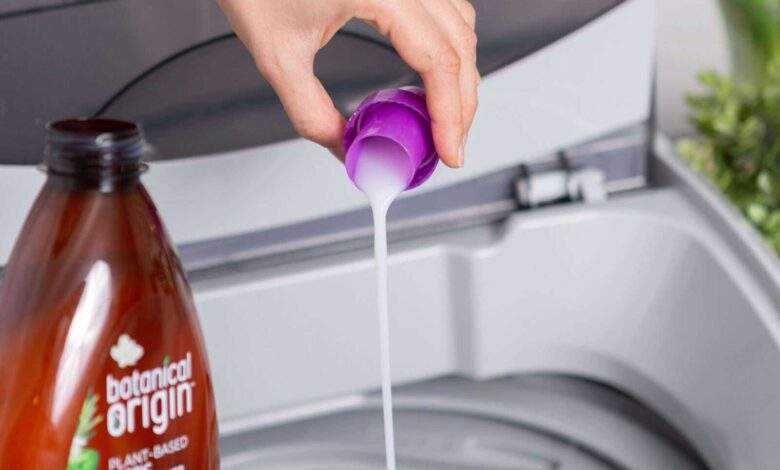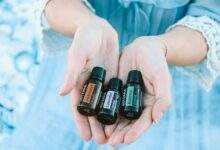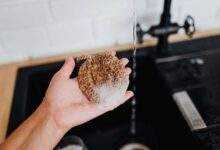Wash Away Worries: DIY Laundry Detergent – Gentle, Eco-Friendly Alternatives

Table of Contents
Tired of laundry day feeling like a battle against harsh chemicals and stubborn stains? Do you dream of gentle cleaning power that pampers your clothes and the planet? Well, fret no more, laundry warriors! Today, we’re embarking on a journey to unveil the magic of DIY laundry detergent.
Here’s the truth: making your own laundry detergent isn’t just about saving money (although, let’s be honest, who doesn’t love that?). It’s about taking control of your cleaning routine, choosing gentle alternatives for sensitive skin and delicate fabrics, and saying goodbye to a laundry list of harsh chemicals. Plus, by embracing DIY, we can all contribute to a more sustainable future, one eco-friendly wash cycle at a time.
So, grab your favorite mug of cleaning inspiration (coffee works too!), because we’re about to dive deep into the world of DIY laundry detergent. We’ll explore the benefits, unveil essential ingredients, and equip you with step-by-step recipes for creating a detergent that’s as gentle as it is effective. Buckle up, laundry enthusiasts, because we’re about to transform your laundry routine into a haven of clean clothes and a happy planet!
Section 1: Why Go DIY? Unveiling the Benefits of Homemade Laundry Detergent
1.1 Ditch the Harsh Chemicals: Embracing Gentle Options for Sensitive Skin
Many commercial laundry detergents contain harsh chemicals such as sulfates, phosphates, and artificial fragrances, which can cause skin irritation, allergic reactions, and even respiratory issues. DIY laundry detergent, on the other hand, allows you to use natural, gentle ingredients like baking soda and castile soap. These ingredients are less likely to irritate sensitive skin and are often hypoallergenic.
- Benefits:
- Reduces the risk of allergic reactions and skin irritation.
- Suitable for individuals with eczema, psoriasis, and other skin conditions.
- Can be customized to avoid specific allergens.
- Online Resources:
- Environmental Working Group (EWG) – Information on safe, non-toxic ingredients.
- National Eczema Association – Tips for managing eczema and sensitive skin.
1.2 Eco-Friendly Cleaning Power: Reducing Your Environmental Footprint
Commercial detergents often contain non-biodegradable ingredients that can pollute water sources and harm aquatic life. By making your own laundry detergent, you can choose biodegradable, eco-friendly ingredients that break down naturally and do not contribute to environmental pollution.
- Benefits:
- Reduces water pollution and protects aquatic ecosystems.
- Decreases the carbon footprint associated with manufacturing and transporting commercial detergents.
- Minimizes plastic waste from packaging.
- Online Resources:
- Sustainable Laundry Practices – Tips for reducing your environmental impact.
- Green America – Information on eco-friendly living.
1.3 Cost-Effective Suds: Saving Money on Laundry Detergent
Commercial laundry detergents can be expensive, especially if you have a large household or frequently do laundry. DIY laundry detergent is cost-effective because the basic ingredients, such as baking soda, washing soda, and castile soap, are inexpensive and can be bought in bulk.
- Benefits:
- Significant cost savings over time.
- Ability to make large batches for a fraction of the cost of commercial detergents.
- Control over the quality and quantity of ingredients.
- Online Resources:
- Money Saving Mom – Budget-friendly DIY tips and recipes.
- The Simple Dollar – Financial advice and cost-saving strategies.
1.4 Customization is Key: Tailoring Your Detergent to Specific Needs
One of the greatest advantages of DIY laundry detergent is the ability to customize it to suit your specific laundry needs. Whether you need a gentle formula for baby clothes, a powerful cleaner for cloth diapers, or a special detergent for delicate fabrics like wool, you can adjust the ingredients and ratios to create the perfect solution.
- Customization Ideas:
- Baby Clothes: Use extra-gentle ingredients like castile soap and avoid essential oils.
- Cloth Diapers: Add washing soda for extra cleaning power and stain removal.
- Wool: Use a mild soap and add lanolin to condition the fibers.
- Online Resources:
- Wellness Mama – DIY recipes and natural living tips.
- The Spruce – Home and laundry care advice.
Section 2: Gather Your Arsenal: Essential Ingredients for DIY Laundry Detergent
2.1 The Powerhouse Trio: Baking Soda, Washing Soda, and Castile Soap
These three ingredients form the backbone of most DIY laundry detergent recipes. Each one has unique properties that contribute to effective cleaning.
- Baking Soda:
- Neutralizes odors.
- Softens water to improve cleaning efficacy.
- Acts as a mild abrasive to help remove stains.
- Washing Soda:
- Boosts the detergent’s cleaning power.
- Helps to remove tough stains and grease.
- Softens water to enhance the effectiveness of soap.
- Castile Soap:
- Made from vegetable oils, making it a natural and biodegradable soap.
- Provides gentle yet effective cleaning.
- Available in liquid or bar form for versatility in recipes.
- Online Resources:
- Dr. Bronner’s – Information on castile soap and its uses.
- Arm & Hammer – Details on baking soda and washing soda.
2.2 Natural Boosters: Borax and Oxyclean for Extra Cleaning Power
For tougher stains and more demanding laundry needs, consider adding borax or Oxyclean to your detergent. These optional ingredients enhance the cleaning power of your DIY detergent and help tackle stubborn dirt and grime.
- Borax:
- Acts as a pH buffer to enhance cleaning power.
- Helps to remove stains and odors.
- Acts as a natural disinfectant.
- Oxyclean:
- Contains sodium percarbonate, which releases hydrogen peroxide to break down stains.
- Effective on tough stains like blood, wine, and grass.
- Safe for colors and whites.
- Online Resources:
- Borax: All You Need to Know – Uses and safety information.
- OxiClean – Product details and usage tips.
2.3 Softening Touches: Vinegar and Essential Oils
To add a fabric softening effect and a pleasant scent to your laundry, vinegar and essential oils are excellent additions.
- Vinegar:
- Softens fabrics and reduces static.
- Helps to break down detergent residue.
- Acts as a natural disinfectant.
- Essential Oils:
- Provide a natural fragrance without synthetic perfumes.
- Offer various benefits, such as antibacterial properties (e.g., tea tree oil) or calming effects (e.g., lavender oil).
- Allow for customization of scents to your preference.
- Online Resources:
- National Association for Holistic Aromatherapy – Information on essential oils and their uses.
- Vinegar Tips – Uses for vinegar in cleaning and laundry.
2.4 Safety First: Choosing the Right Ingredients and Avoiding Harmful Alternatives
When making your own laundry detergent, it’s crucial to choose safe and effective ingredients. Avoid harmful chemicals and ensure that the components you use are non-toxic and suitable for your washing machine and fabric types.
- Safety Tips:
- Always handle borax and washing soda with care, as they can be irritating to the skin and eyes.
- Use gloves when mixing ingredients.
- Store ingredients and finished detergent in a secure place away from children and pets.
- Online Resources:
- Environmental Working Group (EWG) – Database of safe household products.
- Safe Household Cleaning – Tips for non-toxic cleaning.
Section 3: DIY Laundry Detergent Recipes: Unleash Your Inner Cleaning Chemist
3.1 The All-Purpose Hero: A Basic DIY Laundry Detergent Recipe
This simple recipe is perfect for everyday laundry. It’s easy to make and effective for most loads.
- Ingredients:
- 1 cup washing soda
- 1 cup baking soda
- 1 bar of castile soap, grated
- Instructions:
- Grate the castile soap using a cheese grater or food processor.
- In a large bowl, mix the grated soap with the washing soda and baking soda.
- Store the mixture in an airtight container.
- Usage: Use 1-2 tablespoons per load, depending on the size and soil level.
- Online Resources:
- The Prairie Homestead – Homesteading and DIY recipes.
- The Homemade Experiment – DIY detergent recipes and tips.
3.2 Gentle Giant: DIY Laundry Detergent for Sensitive Skin
For those with sensitive skin, this recipe uses mild ingredients like baking soda, castile soap, and a small amount of vinegar to ensure gentle cleaning without irritation.
- Ingredients:
- 1 cup washing soda
- 1 cup baking soda
- 1 bar of castile soap, grated
- 1 cup white vinegar
- Instructions:
- Grate the castile soap using a cheese grater or food processor.
- In a large bowl, mix the grated soap with the washing soda and baking soda.
- Gradually add the white vinegar to the dry mixture, stirring continuously to prevent clumping.
- Store the mixture in an airtight container.
- Usage: Use 1 tablespoon per load for high-efficiency washers and 2 tablespoons for regular washers.
- Online Resources:
- National Eczema Association – Tips for managing eczema and sensitive skin.
- Dr. Bronner’s – Information on castile soap and its benefits for sensitive skin.
3.3 Stain Slayer Supreme: DIY Laundry Detergent for Tough Stains
This powerful recipe includes washing soda, borax, and Oxyclean to provide extra stain-fighting power, ideal for heavily soiled clothes and stubborn stains.
- Ingredients:
- 1 cup washing soda
- 1 cup baking soda
- 1 cup borax
- 1 cup Oxyclean
- 1 bar of castile soap, grated
- Instructions:
- Grate the castile soap using a cheese grater or food processor.
- In a large bowl, mix the grated soap with the washing soda, baking soda, borax, and Oxyclean.
- Store the mixture in an airtight container.
- Usage: Use 2 tablespoons per load for regular washers and 1 tablespoon for high-efficiency washers.
- Online Resources:
- Borax: All You Need to Know – Uses and safety information.
- OxiClean – Product details and usage tips.
3.4 Fresh & Clean: DIY Laundry Detergent with Essential Oils
Add a fresh scent to your DIY detergent by incorporating essential oils. This recipe combines the cleaning power of baking soda and washing soda with your favorite essential oils for a fragrant finish.
- Ingredients:
- 1 cup washing soda
- 1 cup baking soda
- 1 bar of castile soap, grated
- 20-30 drops of essential oils (e.g., lavender, lemon, tea tree)
- Instructions:
- Grate the castile soap using a cheese grater or food processor.
- In a large bowl, mix the grated soap with the washing soda and baking soda.
- Add the essential oils to the dry mixture and stir well to combine.
- Store the mixture in an airtight container.
- Usage: Use 1-2 tablespoons per load, depending on the size and soil level.
- Online Resources:
- National Association for Holistic Aromatherapy – Information on essential oils and their uses.
- Dr. Bronner’s – Information on castile soap and its uses.
Section 4: Mixing Up the Magic: Step-by-Step Guide to Making Your DIY Laundry Detergent
4.1 Prepare Your Workspace: Gathering Supplies and Maintaining a Clean Environment
Before you start, ensure you have all necessary supplies and a clean, organized workspace. This preparation helps prevent contamination and ensures a smooth process.
- Supplies Needed:
- Large mixing bowl
- Grater or food processor
- Measuring cups and spoons
- Airtight storage containers
- Gloves (optional, for handling borax and washing soda)
- Tips:
- Choose a well-ventilated area to work in.
- Clean and sanitize your workspace before starting.
- Lay out all ingredients and tools for easy access.
- Online Resources:
- Organizing Your Workspace – Tips for organizing and cleaning your workspace.
- Home Cleaning Solutions – Ideas for maintaining a clean environment.
4.2 Measurement Matters: Following Recipes and Using Accurate Measurements
Accurate measurements are crucial for effective DIY detergent. Follow recipes closely and use precise amounts to achieve the best results.
- Tips:
- Use dedicated measuring tools for your DIY projects to avoid cross-contamination.
- Level off dry ingredients with a straight edge for precise measurements.
- Use a kitchen scale for exact measurements if needed.
- Online Resources:
- Measuring Tips – Guidance on accurate measuring techniques.
- Recipe Measurements – Tips for measuring ingredients accurately.
4.3 Mixing and Mingling: Combining Ingredients Safely and Effectively
Mix your ingredients thoroughly to ensure even distribution. Use appropriate tools and follow safety guidelines to avoid mishaps.
- Tips:
- Gradually add liquid ingredients to dry ones to prevent clumping.
- Stir continuously to ensure a smooth mixture.
- Wear gloves when handling potentially irritating ingredients like borax or washing soda.
- Online Resources:
- Mixing Techniques – Tips for effective mixing.
- Safety Precautions – General safety tips for DIY projects.
4.4 Storage Solutions: Choosing the Right Container and Keeping Your Detergent Fresh
Store your DIY detergent in an airtight container to maintain its effectiveness. Label the container with the contents and date to keep track of freshness.
- Tips:
- Use clear, airtight containers for easy identification and to prevent moisture from entering.
- Label your containers with the recipe and date of creation.
- Store in a cool, dry place away from direct sunlight.
- Online Resources:
- Storage Solutions – Ideas for organizing and storing homemade products.
- Labeling Tips – Creative labeling ideas.
Section 5: From Sudsy Science to Sparkling Clothes: Using Your DIY Laundry Detergent
5.1 Dosage Dilemma: How Much Detergent Do You Really Need?
Using the right amount of detergent is key to achieving clean clothes. Typically, 1-2 tablespoons per load is sufficient, but adjust based on load size and soil level.
- Tips:
- For high-efficiency (HE) washers, use 1 tablespoon per load.
- For regular washers, use 2 tablespoons per load.
- Adjust the amount for heavily soiled clothes or larger loads.
- Online Resources:
- Laundry Dosage Guide – Information on how much detergent to use.
- Energy Star – Tips for using high-efficiency washers.
5.2 Machine Compatibility: Ensuring Your DIY Detergent Works with Your Washing Machine
DIY laundry detergent is generally safe for most washing machines, including high-efficiency (HE) models. Ensure your detergent is properly dissolved before adding it to the machine to prevent residue buildup.
- Tips:
- Dissolve the detergent in warm water before adding to the washer.
- Regularly clean your washing machine to prevent buildup.
- Check your washer’s manual for specific guidelines on using homemade detergent.
- Online Resources:
- Washing Machine Care – Tips for maintaining your washing machine.
- High-Efficiency Washing Machines – Information on HE washers and detergents.
5.3 Stain Pre-Treatment: Tackling Tough Stains Before They Set In
For stubborn stains, pre-treat with a small amount of your DIY detergent or a paste made from detergent and water. Allow it to sit before washing for optimal stain removal.
- Tips:
- Apply the detergent directly to the stain and gently rub it in.
- Let the pre-treated stain sit for at least 15 minutes before washing.
- For tough stains, consider using a brush to work the detergent into the fabric.
- Online Resources:
- Stain Removal Guide – Tips for removing various types of stains.
- Pre-Treating Stains – Advice on effective pre-treatment techniques.
5.4 Laundry Bliss: Enjoying Soft, Clean Clothes and a Fresh Scent
Experience the satisfaction of soft, clean clothes with a pleasant scent, thanks to your homemade detergent. Enjoy the benefits of a product tailored to your needs and preferences.
- Tips:
- Add a cup of white vinegar to the rinse cycle for extra softness.
- Use dryer balls or reusable dryer sheets with a few drops of essential oil for added fragrance.
- Enjoy the peace of mind knowing you’re using a gentle, eco-friendly product.
- Online Resources:
- Fabric Softening Tips – DIY fabric softener ideas.
- Essential Oil Uses – Ways to use essential oils in laundry.
Section 6: Troubleshooting Your DIY Journey: Solutions for Common Laundry Mishaps
6.1 Sudsy Situation: Addressing Excessive Sudsing Issues
If you encounter excessive sudsing, it may be due to using too much detergent or the detergent not dissolving properly.
- Solutions:
- Use less detergent, especially for high-efficiency washers.
- Ensure the detergent is fully dissolved before adding it to the washer.
- Consider using a powdered detergent to reduce suds.
- Online Resources:
- Laundry Sudsing Solutions – Tips for managing excess suds.
- High-Efficiency Washer Care – Advice on using detergents in HE washers.
6.2 Cleaning Concerns: Ensuring Your DIY Detergent Cleans Effectively
If your clothes aren’t coming out as clean as expected, consider these tips to boost cleaning power.
- Solutions:
- Pre-treat stains before washing.
- Use hot water for whites and heavily soiled items.
- Increase the amount of washing soda in your recipe for extra cleaning power.
- Online Resources:
- Effective Laundry Tips – Advice for getting the best results from your laundry.
- Stain Removal Guide – Comprehensive stain removal tips.
6.3 Scent Sensibility: Choosing the Right Essential Oils and Avoiding Skin Irritation
To avoid skin irritation, select essential oils that are gentle and known for their mildness.
- Solutions:
- Test a small amount of the essential oil on your skin before using it in your detergent.
- Use oils like lavender, chamomile, and tea tree, which are generally safe for sensitive skin.
- Avoid strong oils like cinnamon or clove, which can cause irritation.
- Online Resources:
- Essential Oil Safety – Guidelines for using essential oils safely.
- Gentle Essential Oils – Recommendations for oils suitable for sensitive skin.
6.4 Storage Woes: Avoiding Mold Growth and Maintaining Detergent Quality
Proper storage is key to preventing mold growth and maintaining the quality of your detergent.
- Solutions:
- Store your detergent in an airtight container.
- Keep the container in a cool, dry place away from direct sunlight.
- Use desiccant packs in the container to absorb moisture.
- Online Resources:
- Mold Prevention Tips – Information on preventing mold and dampness.
- Storage Solutions – Tips for effective storage of household products.
Section 7: Beyond the Basics: Going Green Throughout Your Laundry Routine
7.1 Eco-Friendly Laundry Habits: Reducing Water Usage and Energy Consumption
Adopting eco-friendly laundry habits helps reduce your environmental footprint beyond using DIY detergent.
- Tips:
- Wash full loads to maximize water and energy efficiency.
- Use cold water for most loads to save energy.
- Choose an energy-efficient washing machine.
- Online Resources:
- Energy Star – Information on energy-efficient appliances.
- Water Conservation Tips – Tips for conserving water.
7.2 Embrace Cold Water Washing: Saving Energy and Protecting Clothes
Cold water washing not only saves energy but also helps protect your clothes from fading and shrinking.
- Benefits:
- Reduces energy consumption by up to 90%.
- Prolongs the life of your clothes.
- Prevents colors from bleeding and fading.
- Online Resources:
- Cold Water Washing – Benefits and tips for cold water washing.
- Energy Saving Tips – Energy-saving tips for laundry.
7.3 Air Drying Power: Minimizing Energy Use and Extending Clothing Life
Air drying is an excellent way to save energy and extend the life of your clothes. It reduces wear and tear from tumble drying.
- Tips:
- Use a drying rack or clothesline.
- Hang clothes indoors or outdoors, weather permitting.
- Shake out clothes before hanging to reduce wrinkles.
- Online Resources:
- Air Drying Clothes – Benefits and tips for air drying.
- Laundry Drying Solutions – Ideas for drying clothes efficiently.
7.4 Eco-Friendly Laundry Products: Choosing Sustainable Laundry Products Beyond Detergent
Explore additional eco-friendly products like laundry balls, reusable dryer sheets, and wool dryer balls to further green your laundry routine.
- Products:
- Laundry Balls: Reduce the amount of detergent needed and help soften clothes.
- Reusable Dryer Sheets: Provide a chemical-free alternative to disposable dryer sheets.
- Wool Dryer Balls: Naturally soften clothes and reduce drying time.
- Online Resources:
- Eco-Friendly Laundry Products – Guide to sustainable laundry products.
- Green Laundry Solutions – Tips for an eco-friendly laundry routine.
Section 8: The Final Note: DIY Laundry Detergent – A Gentle Revolution
8.1 Small Steps, Big Impact: The Power of Making Sustainable Choices
Every small change you make contributes to a larger impact on the environment. DIY laundry detergent is a simple yet effective step toward sustainable living.
- Benefits:
- Reduces reliance on commercial products.
- Encourages a shift towards more mindful consumption.
- Promotes environmental awareness and responsibility.
- Online Resources:
- Sustainable Living Tips – Ideas for living sustainably.
- Green America – Information on sustainable practices.
8.2 Sharing the Sudsy Love: Inspiring Others with Your DIY Journey
Share your DIY laundry detergent experiences with friends and family to inspire them to make eco-friendly changes.
- Ways to Share:
- Host a DIY detergent-making party.
- Share recipes and tips on social media.
- Write a blog post or create a video tutorial.
- Online Resources:
- Sharing DIY Ideas – Platform for sharing DIY projects and ideas.
- Blogging Tips – Guide to starting a blog.
8.3 Experimentation is Key: Exploring New Ingredients and Techniques
Don’t be afraid to experiment with new ingredients and techniques to find the perfect formula for your needs. DIY allows for endless customization and creativity.
- Tips:
- Try different essential oil blends for unique scents.
- Experiment with alternative ingredients like soap nuts or baking soda alternatives.
- Keep a journal of your recipes and results to track what works best.
- Online Resources:
- DIY Experimentation – Ideas and tips for DIY projects.
- Natural Living Blogs – Inspiration for natural and sustainable living.
8.4 The Joys of DIY Cleaning: Discovering Cost-Effectiveness and Empowerment
Making your own cleaning products is not only cost-effective but also empowering. It provides a sense of accomplishment and control over the products you use in your home.
- Benefits:
- Saves money in the long run.
- Reduces exposure to harmful chemicals.
- Encourages a hands-on approach to household management.
- Online Resources:
- DIY Cleaning Products – Recipes and tips for homemade cleaning products.
- Budget-Friendly DIY – Cost-saving DIY projects and ideas.
8.5 A Sustainable Future: Embracing Eco-Friendly Habits One
Step at a Time
Embracing DIY laundry detergent is just the beginning of a journey toward a more sustainable lifestyle. Each step you take brings you closer to a greener future.
- Final Thoughts:
- Start with small changes and gradually incorporate more eco-friendly practices into your routine.
- Educate yourself and others about the benefits of sustainable living.
- Celebrate your progress and the positive impact you’re making on the planet.
- Online Resources:
- Sustainable Living Community – News and resources on sustainable living.
- Environmental Defense Fund – Information on environmental protection and sustainability initiatives.
FAQ: Unleashing the Power of DIY Laundry Detergent – Frequently Asked Questions
We’ve explored the wonderful world of DIY laundry detergent and the power to create gentle yet effective cleaning solutions. But you might still have some questions swirling in the washing machine of your mind. Worry not, fellow laundry enthusiasts! This FAQ section tackles 10 top questions to ensure your DIY journey is a sparkling success:
1. Is DIY laundry detergent safe for all washing machines?
Generally, yes! However, it’s always a good idea to check your washing machine manual for any specific recommendations. If you have a high-efficiency (HE) machine, you might need to adjust the recipe to use less detergent due to the higher concentration of water in HE cycles.
2. Will DIY detergent clean my clothes as well as store-bought brands?
Absolutely! DIY detergents, when made correctly, can be just as effective as commercial brands at tackling everyday dirt and grime. Some recipes even offer additional stain-fighting power with the inclusion of ingredients like borax or oxyclean.
3. How long will my homemade laundry detergent last?
Typically, DIY laundry detergent can last for several months when stored properly in an airtight container in a cool, dry place. To ensure optimal performance, it’s best to make batches in quantities that you’ll use within a few months.
4. Can I add essential oils to my DIY detergent for a fresh scent?
Yes! Essential oils like lavender, lemon, or tea tree can be a wonderful way to naturally fragrance your laundry. However, remember that some essential oils can irritate sensitive skin. Do a patch test on a hidden area of clothing before adding them to your entire batch.
5. What are some common mistakes to avoid when making DIY laundry detergent?
Using inaccurate measurements or the wrong type of ingredients can affect the effectiveness of your detergent. Also, avoid storing your detergent in a damp location, as this can lead to mold growth.
6. Can I use DIY detergent for baby clothes or cloth diapers?
Yes, you can! By choosing gentle ingredients like castile soap and skipping essential oils, you can create a safe and effective laundry detergent specifically tailored for delicate fabrics and sensitive skin.
7. I have hard water. Will DIY detergent still work effectively?
Hard water can sometimes reduce the cleaning power of DIY detergent. You can address this by adding a cup of white vinegar to your wash cycle or by using a washing soda recipe specifically formulated for hard water.
8. How much DIY laundry detergent should I use per load?
The amount can vary depending on the recipe and the size of your load. Generally, a good starting point is about 1-2 tablespoons of detergent per standard load. Observe the cleaning results and adjust the amount as needed.
9. What are some eco-friendly laundry practices I can combine with DIY detergent?
Using cold water for most laundry loads is a great way to save energy. Consider air drying your clothes whenever possible instead of using a dryer. Additionally, explore eco-friendly laundry balls or dryer sheets to further reduce your environmental impact.
10. Where can I find more DIY laundry detergent recipes and inspiration?
There’s a wealth of information online! Green cleaning websites, DIY blogs, and even social media groups can offer a variety of recipes, tips, and troubleshooting advice. Don’t be afraid to experiment and find a DIY laundry detergent solution that works perfectly for you and your family.
With this FAQ as your guide, you’re well on your way to a successful and sustainable laundry routine thanks to the magic of DIY detergent. So, grab your ingredients, unleash your inner mixing master, and get ready to experience the joy of clean clothes and a happy planet, one eco-friendly wash cycle at a time!
You Did It! Your DIY Laundry Detergent Arsenal is Ready to Tackle Any Stain!
Congratulations! You’ve successfully navigated the world of DIY laundry detergent. Not only have you become a mixing master, but you’re now a champion of gentle cleaning and eco-friendly living. Look at those neatly labeled containers filled with your creation – a testament to your sustainable superpower!
But the journey doesn’t stop here. Share your DIY detergent wisdom online, inspire your friends and family, and maybe even throw a “Sudsy Soiree” to showcase your eco-friendly cleaning prowess. Remember, every laundry load washed with your DIY detergent is a tiny victory for your skin, your clothes, and the planet. So, keep experimenting, keep customizing, and keep washing with that newfound confidence. You’ve unlocked the power of DIY laundry detergent, and the possibilities are endless! Happy (and sustainable) cleaning!








